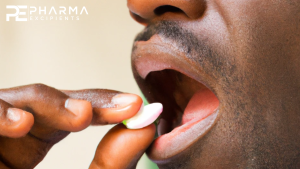Development of Orally Administrable Phytochemicals by Nano-Suspension and Nano-Emulsion Techniques

The awareness of the existence in plants of bioactive compounds namely phytochemicals (PHYs), having health properties is progressively expanding. Therefore, their massive introduction in the normal diet, in food supplements, and their use as natural therapeutics to treat several diseases are increasingly emphasized by several sectors. Particularly, most PHYs possessing antifungal, antiviral, anti-inflammatory, antibacterial, antiulcer, anti-cholesterol, hypoglycemic, immunomodulatory, and antioxidant properties have been isolated from plants. Additionally, their secondary modification with new functionalities, to further improve their intrinsic beneficial effects, is extensively investigated.
Unfortunately, although the idea of exploiting PHYs as therapeutics is amazing, its realization is far from simple, and the possibility of exploiting them as effective orally administrable drugs is almost utopic. Most PHYs are insoluble in water and, when introduced orally, they scarcely reach the site of action in therapeutic concentrations. Degradation by enzymatic and microbial digestion, occurring in the mouth, stomach, and intestine, as well as fast metabolism and rapid excretion via the kidney, biliary, or lung, strongly limit their in vivo activity. To overcome these drawbacks, several nanotechnological approaches have been used and many PHYs-loaded delivery systems with dimensions of nanometers have been developed.
This paper, also by reporting various recent case studies, reviews the foremost nano-suspension and nano-emulsion-based techniques developed for formulating the most relevant PHYs in more bioavailable nanoparticles (NPs), suitable or promising for clinical application. Also, the acute and chronic toxic effects due to the exposure to NPs reported so far, the possible nanotoxicity which could derive by their massive employment, as well as the ongoing actions to improve the knowledge in the field were discussed. The state of the art concerning the actual clinical application of both PHYs and the nanotechnologically engineered PHYs was also reviewed.
Table 7. Main types of NEs and common oily phases.

SNEDDSs = self-nanoemulsifying drug delivery systems; SMEDDSs = self-micro-emulsifying drug
delivery systems; SDEDDSs = self-double-emulsifying drug delivery systems; * surfactants, co-surfactants, and stabilizers; ⇑high, higher; ** anhydrous systems.
Following excipients are mentioned in the table besides other: Witepsol, Capryol 90, Olive oil, Castor oil
Download the full article as PDF here Development of Orally Administrable Phytochemicals by Nano-Suspension and Nano-Emulsion Techniques
or read it here
Zuccari, G.; Alfei, S. Development of Orally Administrable Phytochemicals by Nano-Suspension and Nano-Emulsion Techniques. Preprints.org 2023, 2023050658. https://doi.org/10.20944/preprints202305.0658.v1.
Read more on Orally Disintegrating Tablets (ODTs) here:


